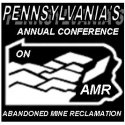Yesterday, the Surface Mining Control & Reclamation Act Amendments Act of 2019 (H.R. 4248) passed that would authorize the Department of the Interior to reauthorize the fee supporting the Abandoned Mine Land Reclamation Trust Fund:
- reimburse states and tribal governments from the fund for the emergency restoration, reclamation, abatement, control, or prevention of adverse effects of coal mining practices;
- extend the authority for Interior to collect reclamation fees through FY2036; and
- increase the minimum amount of funds from $3-$5 million to states and Indian tribes who have an approved abandoned mine reclamation program
The RECLAIM Act (H.R. 2156) passed the U.S. House of Representatives as part of The Moving Forward Act (H.R. 2), a bill to address America’s infrastructure needs and create jobs in the wake of the economic and health crisis caused by COVID-19.
The RECLAIM Act would invest $1 billion in projects ($200 million/year for 5 years) that:
- clean up abandoned coal mines
- restore polluted rivers and streams known as watersheds suffering from abandoned mine drainage (AMD); and
- catalyze community economic development projects on or near reclaimed sites that can leverage additional private sector investment that can lead to more jobs and infrastructure development
These funds would be invested in over 20 states across the country. “Congressman Matt Cartwright’s original co-sponsorship of the Reauthorization Amendments and RECLAIM Act bills were instrumental as well as bipartisan support and leadership from Congressman Glenn Thompson (central PA), an early supporter, and Congressman Dan Meuser (eastern PA). Brian Fitzpatrick deserves a special thanks for being the only PA Republican to vote for the final passage of H.R. 2. However, EPCAMR still would like to thank our PA Republicans who co-sponsored HR 4248 and HR 2156,” Hughes emphasized.

Back in April, EPCAMR led a tour of PA Congressmen, Senator John Yudichak, and supporting partners, including the State PA DEP Bureau of Abandoned Mine Reclamation, to the Swoyersville Culm Bank Pilot Project in Luzerne County, for a press conference on the need for the continued support and co-sponsorship of the RECLAIM Act and Surface Mining Control and Reclamation Act Reauthorization Amendments of 2019. Both are now folded into HR 2, The Moving Forward Act.
For years, EPCAMR has advocated for these bills as job creation measures to support coal communities as we have faced job loss and economic decline due to the disappearing coal industry and the need for additional land reclamation of abandoned mine sites. According to a recent study, in combination, these two bills would create over 13,000 jobs per year restoring abandoned mine lands and waters in Appalachia. These jobs are even more critical for coalfield communities as they grapple with the further economic decline due to the COVID-19 crisis.
The types of jobs that could be created are very similar to the jobs of laid-off mine workers who have operated heavy equipment to move dirt and backfill, revegetate, create ponds, plant trees, run treatment plants, restore waterways, and reclaim mine lands as a part of their mining permits. Abandoned mine land reclamation projects aren’t that different. The transition into these types of jobs could be seamless for operators of heavy equipment like bulldozers, excavators, plows, hydroseeders, water trucks, tree planting machines, surveyors, engineers, and fuel managers.

Here is an example of the construction equipment that are commonly found both on active mining sites as well as on abandoned mine land reclamation projects. They are the same type of jobs that could be created under Hr 2, The Moving Forward Act.
These jobs don’t even include the other potential jobs that are going to be necessary to assess the environmental conditions of the lands and water affected by past mining practices. Water monitors, underground mine pool modelers, land surveyors, plant specialists, field technicians, fishery biologists, stream consultants, GIS technicians and specialists, hydrologists, hydrogeologists, drone operators, foresters, and plant biologists are all jobs that could be supported.

Askam AMD Treatment Facility Maelstrom Oxidizers treating mine water in the Nanticoke Creek Watershed along Dundee Road, Hanover Township, PA, Luzerne County, owned and operated by the Earth Conservancy and monitored by EPCAMR.
Infrastructure development could be a big part of the use of these funds as well. “Building an AMD water treatment plant is infrastructure development in my eyes because it is very similar to operating a sewage or municipal water authority treatment plant. It takes capital, concrete, outbuildings, roads, clarifiers, aerators, pipes, augers, screens, grit chambers, metal removal processes, sludge management, and full-time jobs to run the plants. There will always be a need for long-term operation and maintenance. Sounds like job security to me. That’s an investment in the communities that are heavily impacted by AMD!” exclaimed Bobby Hughes, EPCAMR Executive Director. The bill Invests $40 billion in new wastewater infrastructure to encourage efficiency and affordability and helps communities address stormwater needs, preventing pollution in local rivers, like the Susquehanna. The WVSA and the DAMA are just two authorities that might be able to leverage additional funds in the Wyoming Valley to reduce costs for the ratepayers and municipalities who lay within their sewersheds under their Municipal Stormwater Separation System (MS4) Programs.
“New roads to access these abandoned mine lands will be necessary, culverts and bridges will need to be replaced and enlarged or retrofitted to allow for the passage of new surface water that normally had gone into the underground mine pool complexes leading to the creation of AMD. It is not just to be considered infrastructure from a development standpoint, it can also provide huge environmental benefits in our surrounding watersheds that would allow for the passage of aquatic organisms like various fish species, including wild and native brook trout that we’ve surveyed and have found to be isolated in the headwater streams and tributaries above the mining-impacted areas throughout our Ridges and Valleys in Northeastern PA” Hughes said, who also happens to be a long-time member of the Stanley Cooper Chapter of Trout Unlimited and is the Eastern Region Vice-President of the PA Council of Trout Unlimited. Trout Unlimited’s CEO, Chris Wood has also supported HR 2 this week with a letter to House Leadership and call to the 370,000 members and supporters, of which, in PA alone, there are over 14,000.

EPCAMR and TU Staff and volunteers assessing the native wild brown trout habitat in the Toby Creek Watershed as a part of their completion of the Coldwater Conservation Plan for the Upper Toby Creek Watershed.
“We want to see AMD streams cleaned up and improved habitats for fisheries returned to our region”, desired Hughes. New rules will make it a lot easier for third-party community groups, normally called “Good Samaritans” to take on additional work with a lot less concern for various liability issues in order to improve streams and improve aquatic connections to streams that had been lost and disconnected to due past mining practices.

EPCAMR Executive Director Bobby Hughes teaching students who are interested in becoming volunteers with EPCAMR about the impacts of AMD on the Solomon Creek Watershed in the Wyoming Valley’s Hanover Township location, where the Solomon Creek Boreholes pollute the Creek with iron-laden mine water. They are also collecting iron hydroxide for harvesting, processing, and recycling into iron oxide pigment as a recoverable resource and to demonstrate its use for education purposes with youth in the underserved coalfield communities.
Now that the House has passed The Moving Forward Act, the bills will be sent to the Senate for consideration. “I am cautiously optimistic now that Congress has finally listened to the tens of thousands of coalfield citizens, including myself, who has tried to represent our Northern Appalachian Region of PA’s coalfields and community groups for over 25 years. It has been an ongoing and continuous effort to do justice and speak honestly and candidly in the Halls of Congress during several Hearings with the House Natural Resources Committee and with Staffers of legislators to give examples of potential innovative solutions to reclamation, environmental restoration, workforce development, and job creation and provide each of them with statistics for their own legislative, Congressional and Senatorial Districts on the impacts and inventory they each have a responsibility to ensure that the areas are cleaned up.”

EPCAMR Executive Director, Bobby Hughes, having a few minutes to thank Congressman Cartwright for allowing him to speak on behalf of the coalfield communities of Northeastern and Northcentral PA on Reauthorization, the RECLAIM Act, and Innovative Mine Reclamation solutions following his testimony with the House Natural Resources Committee in Washington DC in 2019.
“I have never forgotten where I was born and raised and am determined like so many others across the country living with AMD and blighted landscapes from past mining to finally have the means and continued funding to help clean up our mining-impacted watersheds and promote opportunities for sustainable economic redevelopment of our mine lands that could market them in a way that solar or geothermal companies and or resource recovery firms could come here and now leverage their investments with these funds under the RECLAIM Act portion of this bill,” a hopeful Hughes stated.

EPCAMR Executive Director, Bobby Hughes surveys the vast 55 acres of abandoned mine lands that are several hundred feet below the location of the waste culm piles and former silt basins in Swoyersville, PA Luzerne County, that are being reclaimed as a part of the PA Abandoned Mine Land Pilot Program to be converted into a community recreational area through a private donation from Pagnotti Enterprises in partnership with the Borough of Swoyersville, the ARIPPA trade association of independent power producers, Keystone Reclamation Fuels Management LLC, PA DEP, PA DEP Bureau of Abandoned Mine Reclamation, PA DEP Pottsville District Mining Office, and the Federal Office of Surface Mining Reclamation & Enforcement. The surface drainages are divided into both the Abraham Creek and Toby Creek watersheds.
“The RECLAIM Act will focus on those areas and will also allow community members to play a role in determining what areas and projects receive support and I won’t let them forget that the local communities voices and concerns need to be heard in order to ensure transparency and necessary accommodations and compromises that will allow for greater community support on the front end of projects that will ultimately benefit the greater coalfield communities,” Hughes emphasized.
“House passage is great news for PA’s coalfield communities, new investors, developers, and alternative renewable and green energy companies, which are eager to get to work reclaiming abandoned mining sites and working with EPCAMR to assist them with siting areas, evaluating underground mine pools for use, recovery of rare earth elements, and the resource recovery of metals for future projects,” said Michael Hewitt, EPCAMR Program Manager.
“We look forward to working with Senator Manchin (WV), who has been a champion on these issues, to promote Senate passage, Senator Capito (WV), as well as our State Senators, Robert P. Casey Jr. and Pat Toomey to continue to let them know how strong and diverse our support has been. There are reclamation projects that are ‘shovel-ready’, AMD discharges waiting to be treated, willing investors looking to leverage the funds for private sector development, available funding, and all we need now is for the Senate to vote”, stated simply, Bobby Hughes, EPCAMR Executive Director.
This legislation is a critical step for coal community recovery after the decline of the coal industry the economic effects of COVID-19, and a transitioning into a new energy economy. The RECLAIM Act and reauthorization of the abandoned mine reclamation fee was recently endorsed by over 100 organizations across the United States in a letter to congressional leadership, including EPCAMR.













You must be logged in to post a comment.